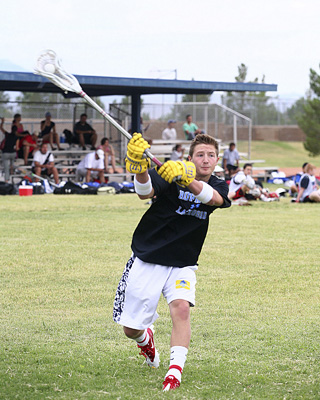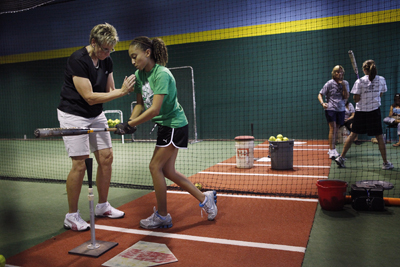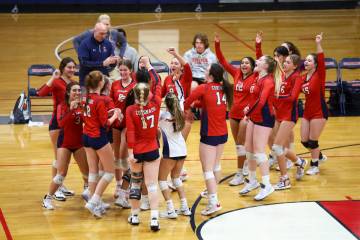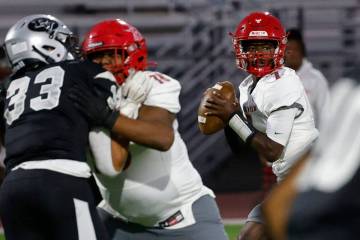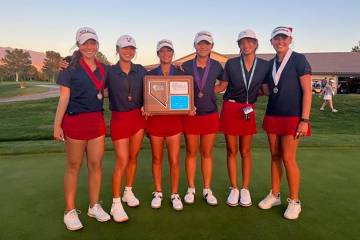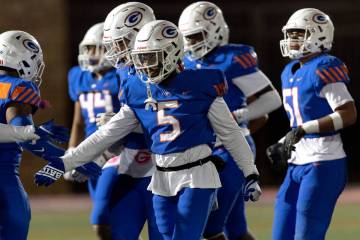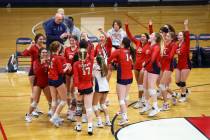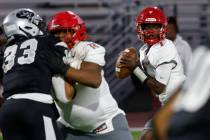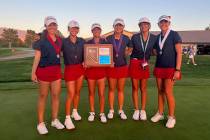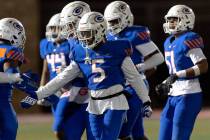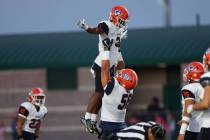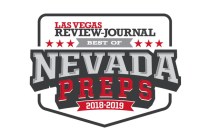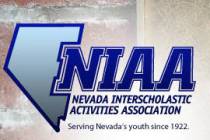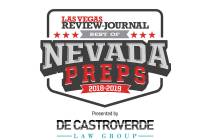Pursuing athletic scholarships is costly for players, parents
The calculator in Chris Eissler’s mind is running. Numbers are being crunched. The addition key is getting a workout. There was the Nike Blue Chip gathering in Maryland, and the recruiting camp to Massachusetts. The Bulldog Bash at Yale University. The Sonoma Shootout in California. The Under Armor National Championships in Maryland.
There was also the price tag.
“This summer alone,” Eissler says, “and I’m embarrassed to say it, we probably spent around $12,000.
“But was the money worth it? Absolutely. A few years ago, we would have hoped he could simply play in college. We have spent a small fortune getting him to this point, but it paid off in a big way.”
It doesn’t pay for most families chasing the dream of an athletic scholarship.
Eissler’s son, Kieran, is a junior at Coronado High and one of the finest prep lacrosse players in the country. He recently committed verbally to attend Johns Hopkins University, where he has dreamed of playing since first picking up a stick. There he can compete against the nation’s best players while pursuing his goal of becoming a doctor.
But for every Kieran Eissler, there are thousands of prep athletes across the country whose scholarship hopes are dashed annually, leaving families with the realization that what money could have been used for college was instead devoured by the big business world of travel teams and personal coaches.
“I marvel at the money parents spend over the years in the pursuit of athletic scholarships,” says Beth Walker, a former college volleyball player at Kansas and now owner of College Funding Coaches.
Her Las Vegas-based company works with parents who want to provide the best educational experience for their children without assuring themselves a permanent residence in the poor house.
“I’m blown away. Your college education is the Super Bowl, the Stanley Cup, the World Series. They should be far more orientated toward the academic piece of it and less on the athletic side of things,” Walker says.
“For most athletes, if they can get even 25 percent of their tuition paid, that’s huge. But many of these families are sure they have the next Division I superstar and there are full scholarships coming. I don’t know what they’re smoking. They’re not coming from a place of reality. It’s scary.”
SCHOLARSHIPS LIMITED
A standard definition: An athletic scholarship is an award of financial aid given to an individual based predominantly on their ability to play a sport.
What that doesn’t say: Just 2 percent of high school athletes nationally receive one.
Yep, 2 percent.
It also doesn’t say that most of those scholarships don’t cover the 25 percent of tuition Walker cites.
The biggest misconception about athletic scholarships remains their actual worth.
As mandated by the NCAA, football, men’s and women’s basketball, women’s volleyball and women’s tennis are the only sports categorized as “head count sports,” meaning coaches can’t award any partial scholarships.
Division I-A football gets 85 “full rides” and men’s basketball gets 13; women’s basketball receives 15; women’s volleyball gets 12; and women’s tennis gets 8.
At UNLV, an out-of-state scholarship is worth roughly $25,000 a year, while in-state grants are valued in the $16,000 range. Those athletes who don’t receive a full ride in a head-count sport are called “walk-ons” and pursue the same money as regular students through financial and academic aid.
It’s not the same for other sports.
Virginia won its fifth national championship in men’s lacrosse this year. In 19 seasons as head coach for the Cavaliers, Dom Starsia has awarded a full scholarship fewer than five times.
And in Olympic sports, the concept of a full ride is more myth than a huge snowman roaming the regions of Tibet. They are referred to as “equivalency sports,” where coaches award pieces of financial aid.
Think of a Division I lacrosse team spreading its allotment of 12.6 scholarships among more than 30 players. Or coaches in soccer, softball and baseball using their roster numbers to do the same with assigned scholarship dollars.
The average tuition at a Pac-12 school is nearly $31,000. The average value of an athletic scholarship in equivalency sports at one of those institutions is under $9,000. Total. For tuition and books and room and board. For everything.
Chris Eissler works full-time for LAX Tech, an indoor lacrosse training facility scheduled to open in Henderson in November. Kieran Eissler’s mom, Amy, works in human resources for the Las Vegas Hilton.
Their son’s scholarship could cover up to 75 percent of the $56,000 it annually costs to attend Johns Hopkins. Some will come from the athletic side, with the rest for academics.
It’s one of the truths when chasing scholarships in minor sports: Good grades can pay off big-time.
Coaches are careful in spreading around their allotted dollars, so they tend to favor athletes who have the grade-point average and test scores needed to qualify for academic money. Kieran Eissler carries a 4.2 GPA.
“For most (athletic scholarships), you will find that the student-athlete would have received as much or more money by simply being a regular student seeking financial aid for college,” says Mark Kantrowitz, author of “Secrets to Winning a Scholarship” and publisher of two leading financial-aid websites.
“It is always worth pursuing a passion, but the idea that most athletic scholarships are a path out of poverty or going to mean a full ride and free education for most athletes just isn’t realistic. It’s not close to being so.”
Starsia said of his champion lacrosse program: “Our goal is that every year, every player gets something.”
That often leaves parents with a big, fat check to write.
Which is something they get used to early in a child’s athletic career.
NO GUARANTEES
Power Alley is a batting cage facility on North Rancho Drive. Near one end, down a long, narrow row permeated with the sounds of coaches shouting and balls flying off metal bats, you will find the best private softball instructor in Las Vegas and one of the finest nationally.
Five days a week, six hours a day, Shan McDonald sets up house in Cage 8. She teaches hitting, pitching and fielding.
She approaches the swing of a 6-year-old as she would an Olympian — basic, clean, simple. She talks about combining the linear with the rotational to maximize one’s hitting power without limiting consistency.
She talks and kids listen; she demonstrates and kids mimic her every movement; she videotapes and they rewatch it together.
And outside Cage 8, down a long, narrow row, the parents of those children sit and watch, and, mostly, dream.
“You hope at the end of the day that dream is not only about a scholarship,” McDonald says. “You hope they are there to invest in things like building life skills and being part of a team and gaining self-confidence.
“Parenting is challenging. They all have dreams and aspirations and visions of what their child is going to become. I never put a damper on the dream of (a scholarship), but I also try and remain very realistic and in the moment with each family. There is not a place for everyone in (college athletics). A scholarship is never guaranteed. I have kids who will never play in college, who might only make their high school JV team.
“My job is to never put a limit on what a kid can do, to never say, 'You can’t make it.’ But it’s also my job to be very honest and realistic with each family.”
It is the realism part many parents can’t always grasp. Chasing the dream is more tempting than a forbidden fruit hanging from a tree in the middle of a garden. It can be a long, difficult and often pointless quest.
Still, parents forge ahead, checkbook in hand.
Jack Welch is the former CEO of General Electric and has an estimated net worth of $720 million. He once said that if you don’t have a competitive advantage, you shouldn’t compete.
It’s a theory thousands and thousands of parents across the country are taking more seriously in their pursuit of an athletic scholarship for their children.
It also comes with a price.
Private instruction for youth athletes has grown the past 15 years faster than the housing market has declined nationally the past five. It has become an industry unto itself, a world of travel teams and personal trainers and coaches and dietitians and focusing on specific skills that are meant to improve a child’s chances of being seen by college coaches.
The cost of private lessons varies with sports, but you can safely begin a budget at $35 for every 30 minutes of instruction and increase your expenses from there depending on a coach’s experience and reputation for producing results.
McDonald, a Canadian who coached UNLV’s softball team for 17 seasons and the Chinese Olympic team at the 2004 Games in Athens, is at the top of such lists.
She is considered that good at improving a player’s skill, which explains why she has some as young as 6 swinging bats and learning how to pitch in Cage 8 weekly.
“The number of kids for (private lessons) has always been pretty high, but now we’re seeing younger and younger ones,” McDonald says. “The parents are seeing something athletic in them and want to start them earlier. That’s fine. You can have a 6-year-old with natural athletic gifts whose awareness is exceptional and can just do certain things without being taught. But those kids are very rare.
“Mostly, a parent calls for private lessons for a 6-year-old and my first question is, 'What’s your motivation?’”
The internal answer for some parents: A golden ticket.
The reality: It doesn’t exist.
The other reality: They won’t admit it.
COSTS ADD UP
Athletic scholarships can’t be bought. It takes years of work and practice and, yes, money for those with the talent to prove themselves to college coaches.
Did we mention money?
Tish Carroll was a swimmer at UNLV. So was her husband, Paul. They have a son, David, who plays baseball at Maryland and a daughter, Leslie, who is a soccer player at Graceland University in Iowa, an NAIA power.
Carroll estimates her family spent more than $10,000 a year as her daughter rose through the ranks of club soccer. They wrote checks for dues and uniforms and travel expenses, and for a personal trainer following Leslie’s knee surgery at age 16.
They also paid just short of $10,000 annually for David’s baseball endeavors with travel teams and personal pitching lessons throughout high school. Legion baseball in Las Vegas can run families in the $4,000 range alone each summer.
Fundraising efforts offset some of the costs that travel and club sports demand, but after all the poker parties and car washes and golf tournaments and raffles have commenced, most parents still find themselves having spent thousands of dollars a year from the time their athlete joins a club team.
“Sure, we could have invested all the money we spent on their club, and travel sports and college would have been much more affordable,” says Tish Carroll, whose husband owns an insurance company while she runs a nonprofit organization called Embrace the Game, which focuses on character development in all aspects of life.
“But our legacy is our children, and the price has been worth it. The life lessons they learned through sports — character, integrity, overcoming adversity, how to deal with a devastating injury — have been so important. They will carry those into the rest of their lives.”
Still, Carroll is aware that in some cases, it is not about the kids: “I think one problem that arises is that many parents base their own self-esteem and identity on their kids getting a scholarship. It starts to define the parents and that’s wrong. They all think their soccer playing daughter is going to North Carolina or UCLA on a full ride. That’s just not reality. They need to broaden their views and do what is in the best interest of their child.
“They need to open their minds.”
If they do, they may very well learn another little known fact: The smaller the college, the more often academic money is available and scholarship dollars are funded by private donors.
Part of Leslie Carroll’s scholarship is paid for by a donor who met her on a visit to the school, watched her play and wanted her to attend Graceland.
Simply put, athletes need to find the right fit.
SMALLER SCHOOLS
Tom Amick estimates that 150 players have received some form of athletic scholarship under his coaching guidance since the mid-1990s.
He, too, promotes a culture of fit over fantasy, of accepting the level of your child’s skill and pursuing scholarship opportunities that make sense.
He also wants parents to know this: There is money out there—junior college. Division I and II, and NAIA. There are scholarships available at all levels for those athletes who own the passion and desire to pursue them.
“Even the most mediocre kid on a team can play college sports and receive some money, if they’re willing to put in the work and have an open mind and find the right program for them,” says Amick, a director of girls’ coaching for Heat Football Club in Las Vegas.
He also runs an elite team in a national league of 66 of the country’s top clubs.
“Often, you will have the kid who has to choose between going to a really good academic school like a Stanford, where maybe she can’t play, against a smaller school, where she can. ...
“The 16th or 17th kid on our roster might get more (scholarship) money because she is willing to consider a smaller school and lesser program than the family that won’t settle for anything beyond a (Top 25) program.”
Melissa McCormick first began receiving college recruiting letters during her sophomore year at Palo Verde. Since age 10, she had wanted to attend Indiana University, to be a Hoosier, to play for the program of which she spent most summers growing up at softball camps. She was dead-set on departing high school and heading directly to the pitching circle in Bloomington.
Last month, however, she began her college career at Towson University in Maryland.
“I’m glad I had an open mind and considered more schools than just (Indiana),” McCormick says. “The more I was there, the more I knew it wasn’t the right fit for me. It just didn’t feel like my school socially and academically and athletically, so I made other (recruiting) trips.
“In the end, I chose a place that had everything I was looking for. I chose a place that was best for me.”
Her scholarship is for 96 percent of a full ride this year, she says, mostly coming from the athletic side of the ledger. Next year she’ll apply for more academic money, McCormick says.
McCormick is a success story. So is that of Kieran Eissler and David and Leslie Carroll. But then there is the athlete who burns out on a sport before college, the one who discovers dating is more fun than another three-hour practice, the one who gets injured, the one whose eyes are opened in high school to new experiences, new interests, new dreams.
The one whose family spends tens of thousands of dollars over several years and the athlete walks away from the playing fields before college.
For those families, chasing athletic scholarships can be a difficult voyage wrapped in a cautionary message shrouded in broken dreams and dollar signs.
At journey’s end, the same questions remain for many: Was the pursuit worth it?
And if so, at what cost?



